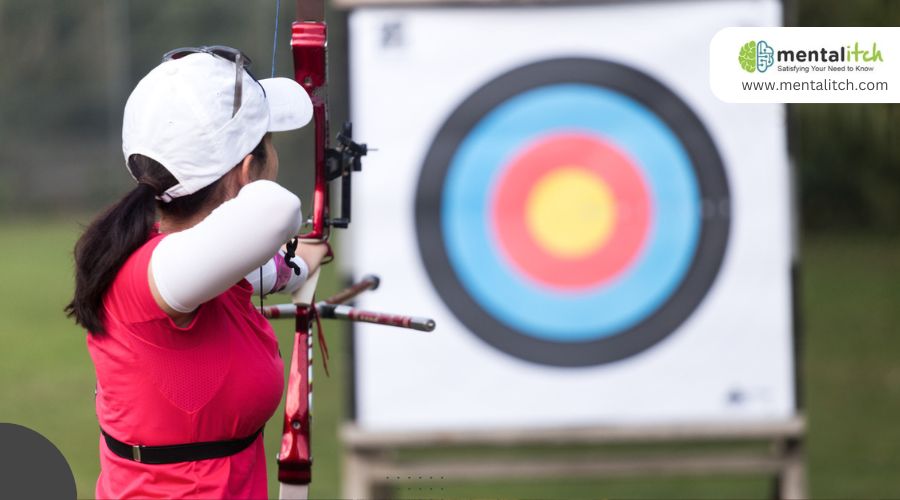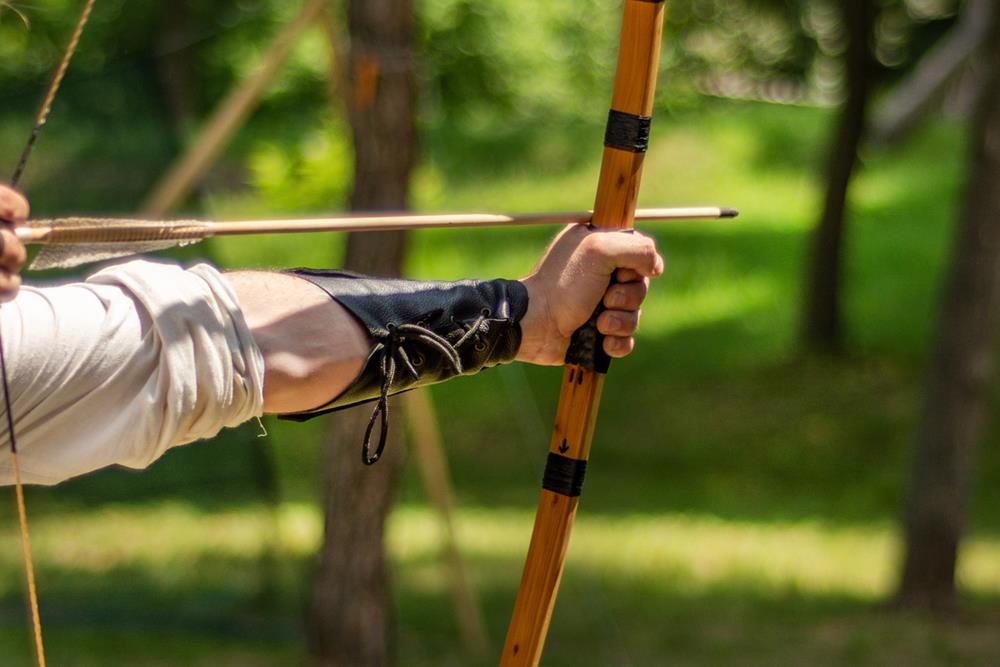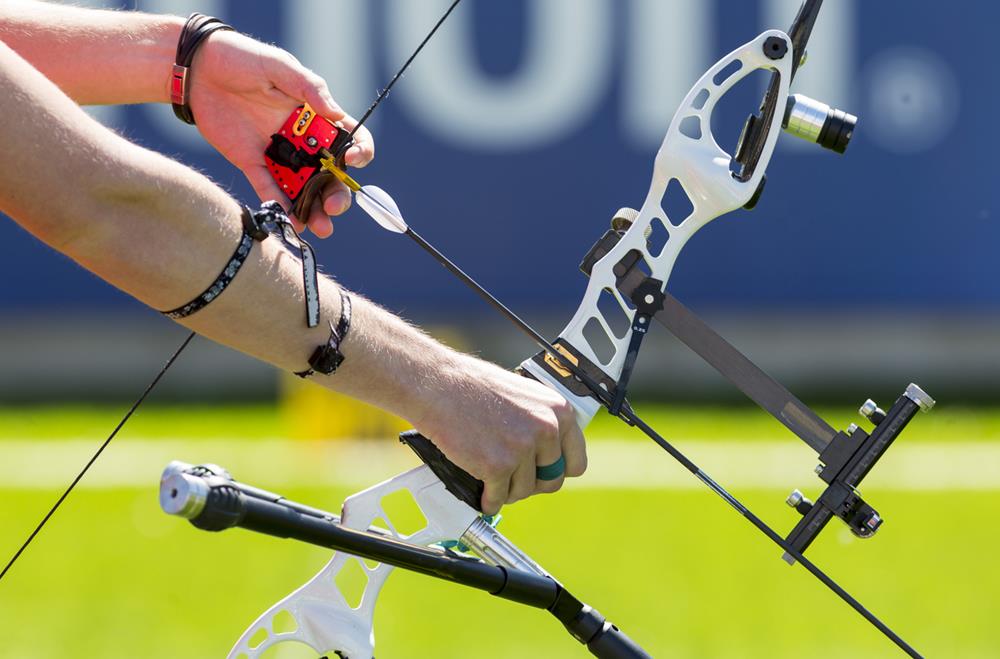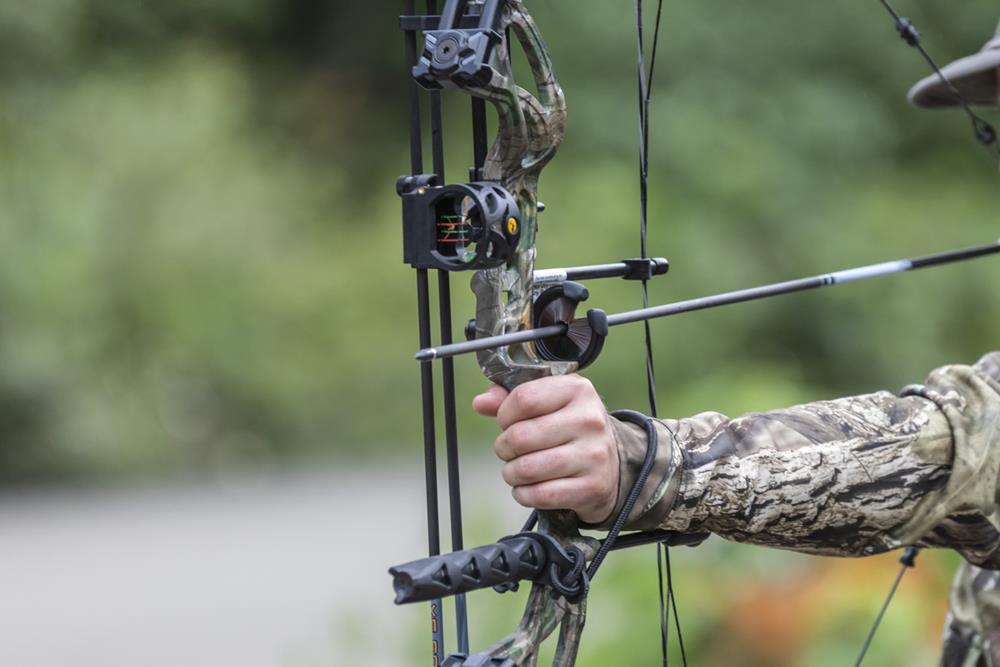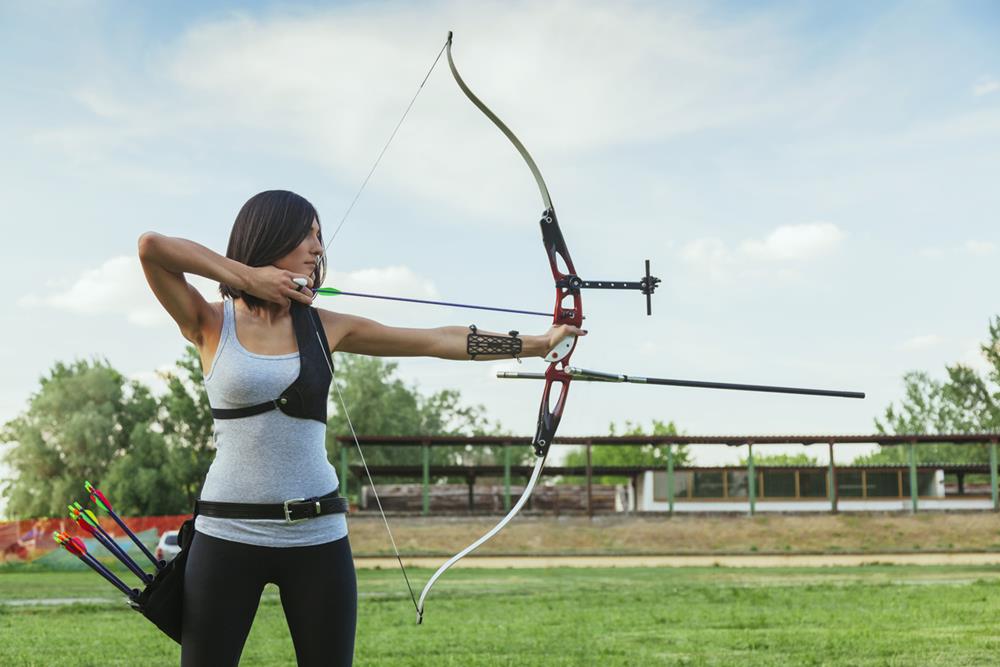The history of archery goes back to the beginning of human settlement on Earth. We see mythical heroes and general cavemen in drawings or engraving with a bow/arch in hand and arrows resting on their backs. But, like everything, time has done its course on archery, too. Nowadays, archery has become merely a recreational sport that once used to be the most required military craft/skill.
Not only has the purpose of archery changed, but the tool itself has also gone through an astonishing evolution. After the Industrial Revolution, the bows started to emerge modified with the magical touch of newer technology along with the application of aerodynamics and physics. Evolution in design, construction, and materials met its ultimate in the 1960s, and now modern people know the bow to be very complicated equipment featuring a camera, clicker, sight, stabilizer, and more.
If you compare a traditional bow and its modern brother, the former will simply give you the impression of a hand-made tool, whereas the latter looks like a factory-made compound machine. We will get deeper into this connection later in the essay.
Yet, the most interesting thing is the technological sophistication of the tool is still unable to make you an expert archer overnight. You still have to labor for months and years to become an expert in archery. Then what is so much sophistication in modern archery for? Let’s find the answer more clearly.
Equipment Differences
The world of archery spans a broad spectrum, from ancient techniques honed over centuries to cutting-edge advancements that redefine accuracy and performance. One of the most significant areas where traditional and modern archery diverges is in the equipment used. This divergence not only highlights the technological progression in the sport but also influences the skills and experiences of the archers themselves.
Traditional Archery Equipment
- Bows: The heart of traditional archery lies in its bows, primarily consisting of longbows and recurve bows. These bows are known for their simplicity and elegance, crafted from natural materials like wood, animal horn, and sinew. The longbow, a tall and relatively straight bow, boasts a history that stretches back thousands of years, while the recurve bow, with its distinctive curved tips, offers a mechanical advantage by storing more energy.
- Materials: Traditional bows are often made from a single piece of wood or a combination of wood and other natural materials to create a composite bow. This reliance on natural materials requires a deep understanding of woodcraft and material properties, making the bowyer’s skill crucial to the performance of the bow.
- Arrows: Traditional arrows complement the simplicity of the bows. Made from wood and feathered fletchings, these arrows have been used for millennia. The craftsmanship of arrow making, from selecting the right wood to attaching the fletchings and points, is an art in itself.
Modern Archery Equipment
- Bows: Modern archery introduces the compound bow alongside advancements in recurve bow design. Compound bows feature a system of pulleys, or cams, which significantly reduce the force required to hold the string at full draw. This mechanical advantage allows for greater accuracy and less physical strain on the archer. Modern recurve bows, while maintaining the basic shape of their traditional counterparts, incorporate materials like carbon fiber and fiberglass for improved performance.
- Technological Enhancements: Beyond the bow itself, modern archery equipment includes a range of technological aids. Sights for precision aiming, stabilizers to reduce bow movement, and release aids that ensure a consistent release all contribute to the enhanced accuracy and consistency achievable with modern equipment.
- Materials: The materials used in modern archery are a testament to technological advancement. Carbon fiber, known for its strength and lightweight properties, is widely used in the construction of bows and arrows. Aluminum alloys are also common, offering durability and precision in equipment manufacturing.
- Arrows: Modern arrows benefit from the same technological advancements as bows, with shafts made from carbon fiber, aluminum, or a combination of both. These materials allow for greater consistency, durability, and speed, further enhancing the archer’s performance.
Technique and Training
Archery, in both its traditional and modern forms, is not only defined by the equipment used but also by the techniques and training methods that archers employ to master their craft. These approaches to archery reflect the philosophical and practical differences between traditional and modern practices, influencing how archers develop their skills and understand the sport.
Traditional Archery Techniques
In traditional archery, the emphasis is often placed on instinctive shooting, a technique that relies on the archer’s intuition and feel rather than mechanical aids or detailed aiming methods. This approach requires archers to develop a deep connection with their bow and arrows, learning to aim based on experience, muscle memory, and an innate sense of the target’s distance and size.
Training for Traditional Archery
Developing proficiency in traditional archery involves a significant amount of practice, as archers must learn to harmonize their body’s movements with their equipment. Training typically focuses on mastering the basics of stance, grip, and drawing, all while building the muscle memory necessary for instinctive shooting. Archers often practice at varied ranges without the use of sights or other aids, which helps to develop an intuitive understanding of how to adjust for different distances.
Modern Archery Techniques
Modern archery techniques, in contrast, often leverage technology and scientific principles to achieve high levels of accuracy and consistency. The use of sights, for example, allows archers to aim with precision, and stabilizers help to minimize bow movement during the shot. Release aids contribute to a consistent release of the string, further enhancing accuracy.
Training for Modern Archery
Training methods in modern archery incorporate not just the physical aspects of shooting but also the technological and mechanical knowledge needed to optimize equipment. Archers must learn to calibrate their sights, adjust their bows, and understand the dynamics of their arrows’ flight. High-speed cameras, software for analyzing shot patterns, and other modern tools can be used to fine-tune techniques and correct inconsistencies.
Blending of Techniques
While the distinctions between traditional and modern archery are clear, there’s a growing interest in blending techniques and training methods. For example, even modern archers can benefit from body awareness and instinctive understanding developed through traditional practices, while traditional archers may incorporate aspects of modern training to improve their strength and stability.
Mental and Physical Aspects
Both traditional and modern archery require a strong mental focus and physical fitness. Mental training, including visualization, breathing techniques, and focus exercises, is crucial for maintaining composure and concentration during shooting. Physically, archers of all disciplines benefit from strength training, flexibility exercises, and endurance work, all tailored to the demands of archery.
Application and Use in Traditional and Modern Archery
The applications and uses of archery have evolved significantly over the centuries, reflecting changes in society, technology, and cultural values. Today, both traditional and modern archery find their places in various contexts, from cultural ceremonies and recreational activities to competitive sports and hunting. This diversity not only highlights the versatility of archery as a discipline but also showcases the unique contributions of both its traditional and modern forms.
Traditional Archery in Cultural Ceremonies and Historical Reenactments
Traditional archery maintains a profound significance in cultural ceremonies and historical reenactments, serving as a bridge to the past and a way to preserve and celebrate heritage. Many cultures around the world incorporate archery into their rituals and festivals, emphasizing its historical importance and spiritual symbolism.
Archery plays a pivotal role in historical reenactments, where enthusiasts strive to recreate the techniques, equipment, and ambiance of past eras. These events often focus on medieval and ancient periods, highlighting the role of archery in military and hunting contexts. Participants pay meticulous attention to the authenticity of their bows, arrows, and shooting techniques, aiming to honor and preserve historical traditions.
Traditional Archery in Hunting
While modern firearms have largely supplanted bows in hunting, traditional archery hunting still enjoys a dedicated following. Archers value the challenge and intimacy of hunting with a bow, viewing it as a more primal and engaging experience. Regulations governing bow hunting vary by region, with many areas requiring specific certifications and adherence to ethical hunting practices.
Modern Archery in Competitive Sports
Modern archery has found a prominent place in competitive sports, including the Olympic and Paralympic Games. This competitive arena showcases the precision, technology, and skill of modern archery, with athletes competing in events such as target archery and field archery.
- Target Archery: Perhaps the most recognized form of modern competitive archery, target archery involves shooting arrows at stationary circular targets at various distances. This discipline emphasizes accuracy, consistency, and control, with competitors using advanced equipment to achieve the highest levels of performance.
- Field Archery: Field archery adds the challenge of varied terrain and distances, simulating a more natural shooting environment. Competitors navigate courses set in wooded or rugged areas, shooting at targets placed at different angles and distances, testing their adaptability and skill in changing conditions.
Modern Archery in Recreation and Leisure
Modern archery also enjoys popularity as a recreational activity, appealing to a broad audience with its accessibility and the satisfaction of mastering a challenging skill. Archery ranges and clubs offer individuals the opportunity to learn and practice archery, regardless of their interest in traditional or modern techniques. For many, it’s a way to enjoy the outdoors, engage in a physically and mentally demanding activity, and connect with a community of like-minded enthusiasts.
Challenges and Considerations
Archery, whether pursued in its traditional form or through modern techniques, presents a range of challenges and considerations for practitioners. These aspects are crucial for both newcomers and experienced archers to understand as they navigate the complexities of the sport and strive for improvement and enjoyment.
Learning Curve and Accessibility
- Traditional Archery: One of the initial challenges faced by aspiring traditional archers is the steep learning curve associated with mastering instinctive shooting. Without the aid of modern technology, archers must develop a keen sense of awareness and intuition, which can take considerable time and practice to achieve. Additionally, finding quality traditional equipment and knowledgeable instructors can be more difficult, as the market is smaller and less mainstream than that for modern archery.
- Modern Archery: While modern archery equipment can make the sport more accessible to beginners through aids like sights and stabilizers, the initial setup and tuning of this equipment can be daunting. The wide variety of choices in bows, arrows, and accessories, combined with the need to understand how to adjust and maintain this equipment, can overwhelm newcomers.
Maintenance and Care of Equipment
- Traditional Equipment: The natural materials used in traditional archery, such as wood, leather, and feather require regular maintenance and a careful approach to storage to prevent damage. Changes in temperature and humidity can significantly affect these materials, necessitating a proactive approach to preserve the integrity of the equipment.
- Modern Equipment: Modern archery equipment, made from materials like carbon fiber, aluminum, and synthetic fibers, also demands attention to maintenance, albeit for different reasons. The complexity and precision of modern bows mean that regular checks and adjustments are necessary to ensure peak performance. Additionally, the mechanical aspects of compound bows and the delicate nature of sights and other accessories require a thorough understanding of the equipment to properly care for and adjust it.
Ethical and Safety Considerations
Both traditional and modern archery require adherence to ethical and safety standards to ensure the well-being of the archer and those around them.
- Safety: The importance of proper shooting technique and range safety protocols cannot be overstated, as the potential for injury with any bow and arrow is significant. Archers must be diligent in following safety guidelines, whether practicing alone or in a group setting.
- Hunting Ethics: For those who pursue bow hunting, ethical considerations are paramount. This includes ensuring humane and responsible hunting practices, understanding and following local regulations, and taking only shots that have a high probability of a quick, humane kill.
Conclusion
While each style of archery offers its unique challenges and rewards, both require dedication, practice, and respect for the craft. Whether you’re drawn to the simplicity and heritage of traditional archery or the precision and technology of modern archery, there’s a place for everyone in this timeless pursuit.
By understanding the differences and appreciating the nuances of each approach, archers can enjoy a fulfilling journey through the art and science of archery, connecting with a community that spans cultures and generations.

